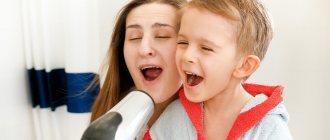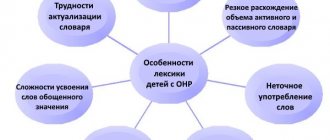Nootropics are neurometabolic stimulants that have a positive effect on complex psychophysiological processes. The mechanism of their action is associated with the restoration of the bioenergetic and metabolic functions of the neuron, as well as the neurotransmitter systems of the brain. The principle of operation of nootropic drugs, as their name suggests, is aimed at improving the functioning of the parts of the brain that are responsible for learning, memory, attention and other cognitive functions.
Nootropic drugs are drugs containing organic or synthetic active substances, as well as their derivatives, which stimulate the functioning of neurotransmitters. They are grouped into a pharmacotherapeutic group with the ATX code N06BX (“Other psychostimulants and nootropic drugs”).
The term nootropics was coined in 1972 by Romanian chemist, psychologist and Ph.D., Corneliu E. Giurgea, who first synthesized piracetam in 1964. Its therapeutic effect turned out to be the opposite of the chemist's expectations - characteristic of psychostimulants, without the occurrence of non-core actions. This effect still remains a mystery to scientists.
Nootropics used in medicine today are presented in the international drug classification system (Anatomical Therapeutic Chemical, ATC), adopted by the Ministry of Health of the Russian Federation in 2002. Other nootropic drugs are created for use within specific countries and are not introduced into the international market.
Clinical use of nootropics
Psychiatrists and psychotherapists can prescribe nootropic drugs either as monotherapy or in combination with other psychotropic drugs. For example, nootropics are prescribed for the treatment of neuroses, attention deficit hyperactivity disorder (ADHD), depressive disorders and other mood disorders, and schizophrenia.
The purpose of prescribing nootropic drugs is to restore the cognitive functions of the brain responsible for the processes of interaction with received information, in particular:
- perception (information, - approx., etc.);
- processing;
- analysis;
- memorization;
- storage;
- correlations;
- conclusions.
Nootropic drugs are also used in other areas of clinical medicine. For example, in pediatrics, where nootropics help restore amino acid deficiency that disrupts protein biosynthesis in the body and metabolic processes in general. In particular, a doctor can prescribe nootropics for children with signs of delayed speech and mental development, mental retardation, and the consequences of perinatal damage to the central nervous system. Doctors of other specializations (speech therapists, neurologists, endocrinologists, gynecologists, urologists, ophthalmologists) can prescribe nootropics depending on the symptoms, including in complex therapy, for various diseases and conditions:
- neuroleptic syndrome;
- stuttering, logoneurosis;
- hyperkinesis, dyskinesia;
- urinary disorders;
- insomnia and other sleep disorders;
- headaches of various etiologies;
- dizziness;
- seasickness;
- open-angle glaucoma;
- vascular diseases of the retina;
- macular diseases;
- diabetic retinopathy;
- Alzheimer's disease;
- Parkinson's disease;
- Huntington's disease;
- with the consequences of TBI.
In other words, the range of use of nootropic drugs is wide and is not limited only to mental disorders. The gentle therapeutic mechanism of drugs in this group allows nootropics to be prescribed to newborns and infants, as well as the elderly. It is also important that nootropic drugs are included in the List of vital and essential drugs for medical use.
Mechanism of action of nootropic drugs
The mechanism of action of nootropics has not been fully studied to date. However, the principle underlying the therapeutic effect, repeatedly confirmed in vivo, is still of interest to researchers in the fields of biochemistry, cytology and pharmacology. In particular, researchers know that the effectiveness of nootropics in clinical medicine is associated with several mechanisms observed at the cellular level in the central nervous system:
- enhance the synthesis of ATP and its derivatives;
- enhance the process of synaptic transmission in the central nervous system;
- enhance the plastic process in the central nervous system by increasing the synthesis of RNA and proteins;
- enhance the process of glucose utilization;
- have a membrane-stabilizing and antioxidant effect.
Thus, the mechanism of action of nootropic drugs is associated with the restoration of metabolic and bioenergetic processes in the brain, which affect a person’s mood, performance and well-being. A correctly selected nootropic will have the effects necessary for treatment, which manifest themselves over a long period of time, provided that the recommendations of the attending physician are followed (for example, regarding a rational and healthy lifestyle, attending psychotherapy sessions, taking first-line medications).
Rice. 1. Neuron
Contraindications for use
Nootropics are considered one of the safest medications. There are no absolute contraindications to their use. Although doctors do not recommend using them unless any disorder of brain activity is diagnosed. They are not prescribed to pregnant women and infants.
Some drugs have side effects. Their undesirable appearance may become a relative contraindication for use. These include:
- increased blood pressure;
- dizziness;
- sleep disorder (more often - insomnia, less often - drowsiness during the day);
- motor restlessness;
- nausea;
- skin itching;
- irritation of mucous membranes.
So, if a person has psychomotor agitation, medication for brain activity can only worsen the situation. Not everyone experiences drowsiness. Before you get behind the wheel, you should monitor your condition after taking medications.
The effectiveness of nootropics
The effectiveness of nootropics, in particular, is explained by the therapeutic effect on the neurotransmitter systems of the brain - monoaminergic, cholinergic and glutamatergic. Nootropics help restore the regulation of the synthesis of phospholipids and proteins in neurons, normalize the structure of cell membranes; reduce the oxygen demand of neurons; suppress the formation of free radicals and lipid peroxidation of cell membranes; increase the protection of neurons to adverse factors affecting their proper functioning.
The results of biochemical blood tests and EEG, as well as laboratory experiments using modern microscopes, allow us to visualize the effectiveness of nootropics. For example, the results of an electroencephalogram can clearly see the effect of using nootropics - increased amplitudes of transcallosal evoked potentials, enhanced power spectrum of the EEG of the cortex and hippocampus, an enlarged dominant peak, smoothed interhemispheric asymmetry.
Rice. 2. Visualization of the effect of nootropics on the electroencephalogram
Monoamine neurotransmitters
Classic monoamines include: histamine, adrenaline, dopamine, norepinephrine, serotonin, melatonin. Monoamine neurotransmitters and neuromodulators act as neurotransmitters in the monoaminergic systems of the central nervous system, which regulate a variety of processes in the body, including:
- emotional condition;
- cognitive activity;
- concentration;
- ability to remember information;
- excitation processes.
Cholinergic neurotransmitters
Cholinergic neurotransmitters in the central nervous system are responsible for the processes of excitation and inhibition in the body. Neurotransmitters of this central nervous system support the autonomous functioning of internal organs and vital processes associated with the work of innervated organs and participate in the transmission of motor activity impulses. Cholinergic deficiency directly affects the imbalance of the central nervous system structures associated with it and can cause the development of:
- neurological symptoms;
- emotional-volitional pathology.
Glutamatergic neurotransmitters
Glutamatergic neurotransmitters are involved in CNS processes associated with cognitive function - they help process and store information. In addition, these neurotransmitters are responsible for motor coordination, response to pain, and the body’s immune response; are responsible for the quality of transmission of nerve impulses and the state of the nervous system as a whole.
Rice. 3. Central nervous system
What is IRR syndrome?
Children with this diagnosis have a poor vocabulary, their own speech is not formed, it is illiterate and incoherent. Retarded speech development can be noticed from the age of 2: such a child does not speak in simple phrases. Signs of RRD depend on the degree of the disorder.
Several classifications of forms of developmental disorders in children have been accepted.
Neurological. The disorder is associated with damage to the central nervous system and brain - as a result of traumatic brain injuries, neuroinfections. The classification includes aphasia, alalia and dysarthria. As well as disorders that are associated with stuttering, deaf-muteness or muteness, structural defects of the articulatory apparatus, and RRR syndrome, which developed as a result of difficult childbirth, prematurity, and social factors.
Speech therapy. Includes sound pronunciation disorders (dysphonia, bradyllalia, tachylalia, stuttering, dyslalia, rhinolalia, dysarthria) and speech structure disorders (alalia and aphasia).
Psychological and pedagogical. Delayed speech development is divided into 2 types - violation of means of communication (distorted listening comprehension of the native language and general underdevelopment of speech) and improper use of means of communication.
ZRR: levels of violations
There are 4 degrees of severity of speech development delay in childhood.
The first is the most severe form of RRD in children. Symptoms: the baby hardly speaks or does not speak at all.
The second is that the active dictionary contains commonly used words, but it pronounces sounds incorrectly, “swallows” or swaps syllables.
Third, he does not always pronounce sounds correctly; he often replaces them with others that sound similar. Speaks only in simple sentences.
The fourth one speaks indistinctly, there are mistakes, articulation is unclear, sounds are not always pronounced correctly, sometimes the baby makes mistakes in word formation. But thinking is critical.
Nootropics for children, adults and the elderly
Currently, clinical studies of nootropics are being conducted in the USA and Europe to identify therapeutic effects that can be used to treat diseases in various fields of medicine. It should be emphasized that we can talk about nootropics with proven effectiveness only in terms of the positive mechanism of their action, recorded by both researchers and doctors in clinical practice.
For example, on February 12, 2010, data from a clinical study on the use of nootropics in the treatment of CNS pathologies was published in the USA (Malykh A., Sadaie R. “Piracetam and piracetam-like drugs: from basic science to novel clinical applications to CNS disorders”). The study demonstrated the neuroprotective effect of the substance, effectiveness in the treatment of cognitive disorders of cerebrovascular and traumatic etiology, as well as associated depressive states. In particular, the study notes the effectiveness of nootropics as part of complex therapy in the treatment of epilepsy.
Similar and other positive effects of using nootropics are noted in many modern clinical studies, the results of which are published in scientific journals and are publicly available on the Internet. In other words, nootropics with proven effectiveness exist, they are presented on the pharmaceutical market, and are actively prescribed by doctors in various fields of medicine, but the final decoding of the therapeutic mechanism of drugs in this group has yet to be learned.
Nootropics for children
Nootropics are used in the treatment of various diseases associated with central nervous system pathology in children. In the first years of a child’s life, they can be prescribed for the prevention and treatment of delayed psycho-speech-motor development; at a later age - to stimulate the activity of the central nervous system systems responsible for concentration, the learning process, memory, and the ability to reproduce information.
Nootropics for children include drugs with dominant or predominant mnestic effects (“true” nootropics):
- racetams;
- cholinesterase drugs;
- neuropeptides and their analogues;
- amino acid activators;
- neuroprotectors;
- activators of brain metabolism;
- cerebral vasodilators;
- calcium antagonists;
- antioxidants;
- GABA activators.
Indications for prescribing nootropics for children are:
- delayed speech development;
- impaired mental function;
- cognitive impairment due to organic brain damage (consequences of neuroinfections, head injury, genetic pathology);
- mental retardation;
- ADHD;
- Parkinson's disease;
- neurogenic urination disorders;
- neurosis-like conditions;
- stuttering, predominantly clonic;
- asthenic and anxiety-neurotic conditions;
- epilepsy (in complex therapy).
Nootropics for adults
Biological therapy for mild, borderline and severe mental disorders may include nootropic drugs. They are prescribed for the occurrence of pathological conditions associated with cognitive functions, mood and sleep. For example, they have a positive effect on the psycho-emotional state and personal effectiveness as an addition to psychotherapeutic treatment, and accelerate the achievement of the desired result.
Nootropics for adults used in mono- and complex therapy of mental disorders:
- pyrrolidone derivatives (Nootropil - note, for example, and further);
- cyclic derivatives, GABA (Pantogam, Phenibut, Aminalon);
- acetylcholine precursors (Deanol);
- pyridoxine derivatives (Pyritinol);
- Devincan derivatives (Vincamine, Vinpocetine);
- neuropeptides (Vasopressin, Oxytocin, Thyroliberin, Cholecystokinin);
- antioxidants (Ionol, Mexidol, Tocopherol).
The above nootropics are prescribed for mental disorders arising from vascular diseases of the brain (F00-F09, “Organic, including symptomatic, mental disorders”):
- exogenous-organic mental disorders;
- transient psychotic disorders;
- persistent mental disorders;
- psychoorganic disorders;
- vascular dementia.
Nootropics for older people
Neuroprotective nootropic therapy for older people is prescribed for Alzheimer's disease, Pick's disease, as well as syndromes including confusion, instability of attention, confusion, disorientation in space and time, memory problems, fragmented thinking, emotional imbalance, fear, anxiety, motor agitation or lethargy, deceptions of perception, sleep disturbances.
Rice. 4. Structure of the nervous system
Vitamins to improve brain function
If no serious disturbances in brain function have been identified, you should not abuse medications. You can solve the problem of increasing concentration or learning ability with the help of vitamins:
- beta-carotene, which protects neurons from premature aging;
- B1, a neuroprotector that supports good memory and clarity of consciousness;
- B6, which supports concentration and prevents depression;
- B9, which is taken to prevent stroke;
- B12, a deficiency of which increases the risk of Alzheimer's disease;
- C, slowing down degenerative processes;
- K, which speeds up the processing of signals entering the brain.
There is no miracle pill that will solve all cognitive problems at once. But correctly identifying the cause of the violations allows you to choose the appropriate remedy for their correction.
List of nootropic drugs
Nootropic drugs for the brain can be found in the international Anatomical-Therapeutic-Chemical Classification of Medicines. The list of nootropics in the subsection “Other psychostimulants and nootropic drugs” (N06BX), which is included in the section “Psychostimulants, drugs used for attention deficit hyperactivity disorder, and nootropic drugs” (N06B), contains:
- Meclofenoxate;
- Pyritinol;
- Piracetam;
- Deanol;
- Fipexide;
- Citicoline;
- Oxiracetam;
- Pirisudanol;
- Linopyrdine;
- Nisophenone;
- Aniracetam;
- Acetylcarnitine;
- Idebenone;
- Prolintane;
- Pipradrol;
- Pramiracetam;
- Adrafinil;
- Vinpocetine;
- Mebicar;
- Phenibut.
The list of nootropics does not end with the names above. On the domestic pharmaceutical markets there are other derivatives, synthetic analogues and drugs that have the properties of nootropics, but are not such. It should be noted that recently there has been a fashion for precisely these “latest generation nootropics” - dietary supplements that can be purchased without a prescription. As a rule, they are complexes of vitamins and substances of plant origin.
In the strict sense of the word, it is not possible to talk about the latest generation of nootropics. It should be understood here that the first nootropic, by definition, was piracetam. Racetams, which have variations in formula and therapeutic effect, and drugs with nootropic properties are still being developed by pharmaceutical companies. Some of them are prohibited in the United States and, in particular, are classified as new psychoactive substances (NPS) in several European countries.
List of used literature
1. Klitochenko G.V., Malyuzhinskaya N.V. "The use of nootropic drugs in pediatrics."
2. Pichikov A.A., Popov Yu.V. "Anorexia nervosa in adolescent girls: course options, relapse factors and suicidal risk in the early stages of treatment."
3. Davydova O.N., Boldyrev A.A. "Glutamate receptors in cells of the nervous and immune systems."
4. Vostrikov V.V. "The place of piracetam in modern practical medicine."
5. Shabalov N.P., Skoromets A.A., Shumilina A.P. “Nootropic and neuroprotective drugs in pediatric neurological practice.”
6. Malykh A., Sadaie R. “Piracetam and piracetam-like drugs: from basic science to novel clinical applications to CNS disorders.”
7. Calliauw L., Marchau M. “Clinical trial of piracetam in disorders of consciousness due to head injury.”
8. Rybak V.A., Matokhina N.V. “Nootropic drugs in the clinical practice of a neurologist.”
Share
Share
How is a child’s speech formed?
The process of forming a child’s speech begins in the first months after birth, so it is necessary to start communicating and speaking with the child already at this age.
Let's look at the main stages of child speech development. At 1.5-2 months, the baby begins to hum, that is, the child begins to pronounce individual sounds. Their range is quite diverse. There are even sounds that are not used in the parents' native language. Over time, they disappear and remain, only those that the child hears from the speech of adults near him. This is why it is so important to communicate and talk with the child already at this age. From 6-7 months, as a rule, babbling appears and the first syllables are formed.
At the age of 1 year, a healthy child can usually pronounce from 2 to 10 words.
At 2 years of age, with normal child development, he begins to speak simple phrases consisting of two words, and his vocabulary can reach 200 words.
At 3 years old, phrases of 3-4 words appear in the child’s speech, and his vocabulary is 300-800 words.
From the age of 4, a child can already use detailed sentences, including all parts of speech.
Cost of treatment in our clinic
| Service | Price | |
| Ambulatory treatment | ||
| Psychiatrist consultation | 4 500 ₽ | |
| Consultation with a psychotherapist | 4 500 ₽ | |
| Psychodiagnostics extended | 7 000 ₽ | |
| Consultation with a psychiatrist at home | 6 000 ₽ | |
| Treatment in hospital | ||
| Delivery to hospital | For free | |
| Standard room | 7 700 ₽ | |
| 3-bed superior room | 10 600 ₽ | |
| 2-bed superior room | 13 700 ₽ | |
| 1 local VIP chamber | 19 000 ₽ | |
| Doctor's appointment 2 weeks after discharge | For free | |






